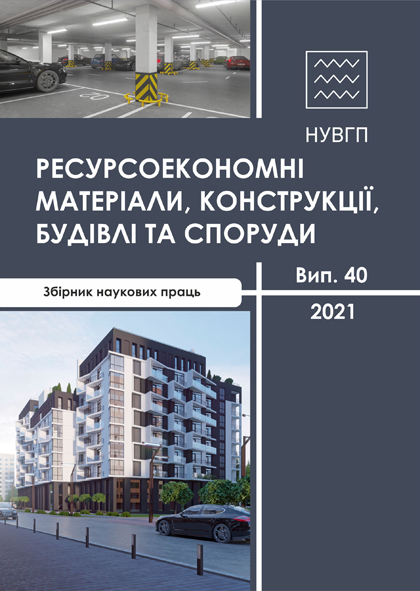MODELING OF ARRAY OF CELLULAR CONCRETE AND ITS WORK UNDER LOAD
DOI:
https://doi.org/10.31713/budres.v0i40.08Abstract
Cellular concrete is known to fail under load almost instantly when certain critical stresses are reached. The article presents one of the possible options for modeling the structure of the array of cellular concrete and offers certain assumptions on the process of cracking in such a cellular, non-continuous environment.
In current construction, a significant part of non load-bearing and load-bearing structures is built of cellular concrete. They are widely used in the installation of thermal and sound insulation of premises or fire protection. Considering the low strength characteristics of such concrete, it is important to describe the process of destruction of structural elements made of cellular concrete accurately. It is reported that due to their fragility cellular concrete fails under load almost instantly when certain critical stresses are reached in the concrete. This type of destruction is called “brittle fracture”. The modern theory of concrete failure, as well as the so-called “brittle fracture” is based on the well-known Griffith theory. A lot of researchers dealt with this problem, but mostly their studies concerned heavy solid concrete. The task of our study is the process of modeling an array of cellular concrete and its work under load, taking into account the characteristics of this type of concrete. Alternatively, one applied a combination of hollow spheres (air bubbles) of different diameters to model the structure of cellular concrete array, which is a realistic representation of cellular concrete array. Concerning the analysis of the cut surface of cellular concretes, air bubbles in the structure of concrete are formed in the size from 0.5 to 4 mm. In general, they can be divided into three groups: “small”, “medium” and “large”. The ratio of the diameters of air bubbles in this division in most cases is 1:2:4. In the area, such air bubbles can join in the number of 3 or 4. The elementary volume of cellular concrete array is presented in the form of a cylinder, as an option of a parallelepiped. One used the Ansys computer program to determine the stresses that occur in elementary volumes of cellular concrete. This program allowed obtaining a picture of stresses in the elements due to compression or stress of the latter. As a result of the conducted modeling, a quantitative picture of stresses in the elementary volume (cylinder or parallelepiped) of cellular concrete was obtained.

